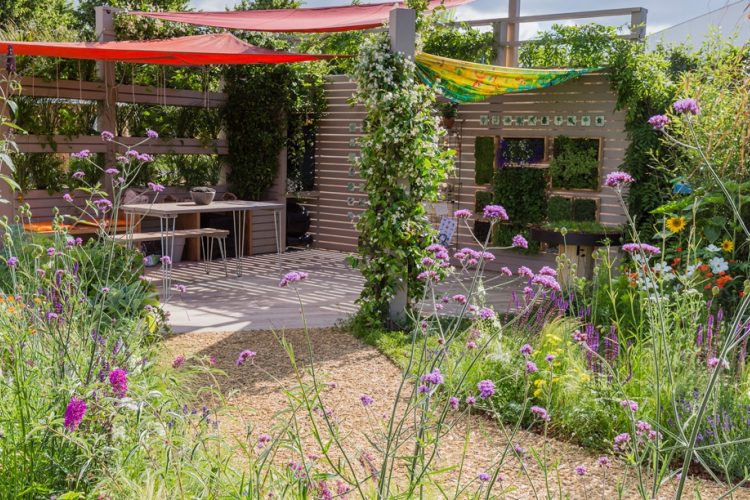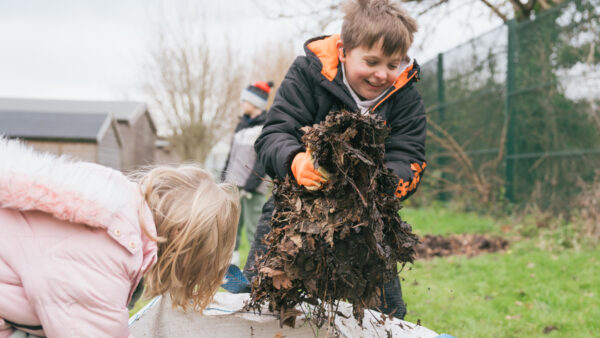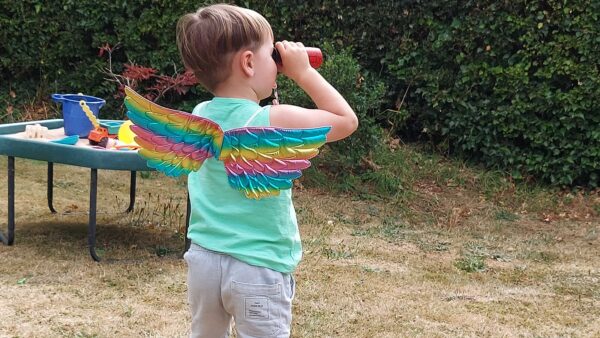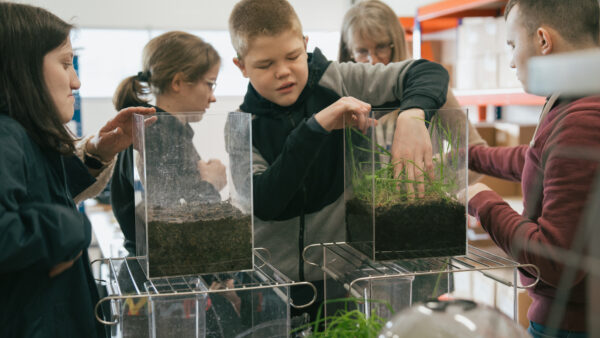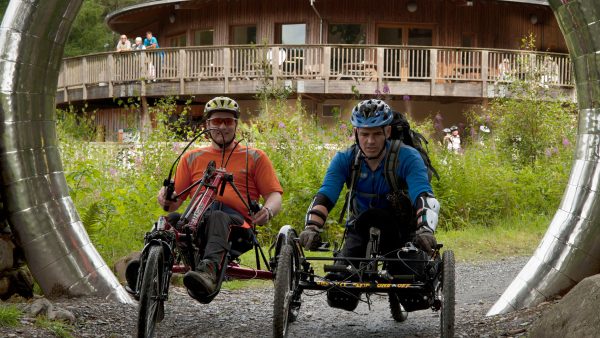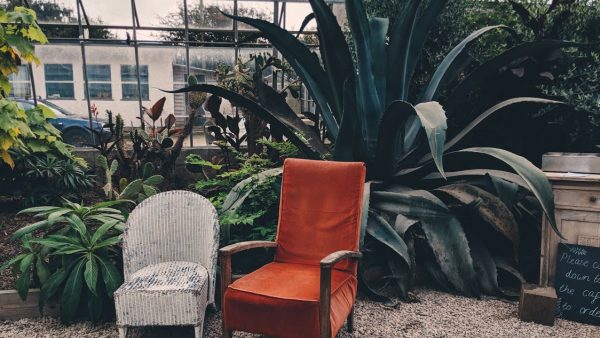Greenspaces; our nature hubs
Green spaces are home to the things that matter - fresh air, natural life and open space. Public parks, woodlands and countryside are our vital, freely available opportunities to connect with nature, the outdoors and other people.
They are the spaces that in principle are open to everyone. In reality this is not the case for many people with disabilities and health conditions, who find their enjoyment of greenspace limited by barriers to access and a limited range of experiences on offer. Our work focuses on harnessing the benefits to people’s wellbeing and quality of life that comes from using green space.
Our approach is designed to make spaces accessible, inviting and welcoming. This applies as much to local parks serving as daily nature connectors, to the more occasional but perhaps deeper enjoyment of a larger forest or country walk. There are key questions to consider:
- how people get to these spaces,
- what experiences are on offer, and
- are there opportunities for people to get more actively involved?
Accessible greenspace is shared greenspace
People with disabilities and health issues often experience barriers to access that limit their enjoyment of these open spaces. Our Making Connections project ran national surveys of service users and providers to find out what barriers are in play and how we can resolve them. It was a step change in showing that the limits aren’t just about ramps and toilets, but that issues like accessible information and feeling welcome are just as important.
We also found that experiences on offer in greenspace can be so focused on specific users that they offer little incentive for others. The trend to open up places for families with children, and a more singular focus on children’s play and sport, can inadvertently send a message to older visitors that this place isn’t for them.
The approach we use in our access reviews and advice is always to look at access and experience together. We look at all user groups and demographics to ensure everyone is catered for and feels welcome.
Developing standards for accessible greenspace
Our approach to improving access to outdoor spaces draws on decades of working with greenspace organisations and people with disabilities. We have designed practical tools like the Access Chain and developed standards in guidance like BARM to steer good practice.
We provide access reviews as part of our consultancy service and these identify existing constraints as well as opportunities to improve accessibility and quality of experience.
Examples of an inclusive approach to greenspace
The best demonstration of our approach can be seen at the Eden Project, Cornwall. Our work together since Eden’s inception is reflected in all aspects of the visitor experience, from path widths to initiatives like relaxed programmes and visitor access guides.
We work with gardens and woodlands that are run as visitor attractions, providing advice and reviewing access as part of our consultancy service.
Encouraging local access to greenspace
We often base our activities in public greenspace. Our walking groups regularly enjoy local countryside routes and our nature-based activities with young people are often based in a woodland or garden. We want to support people to be active and visible in their local greenspaces, removing some of the stigma and mystery surrounding disability and building new social networks.
Making sensory gardens
All gardens are sensory; it is the special emphasis on the senses that makes a ‘sensory garden’. Sensory gardens invite people to explore, touch, pick, smell and listen, to pay close attention, to interact with objects. Engaging the senses creates stronger, more memorable experiences.
A good sensory garden connects people more intimately with a place and helps convey complex messages in more tangible ways. Health benefits include better sleep patterns, reduced anxiety and greater sense of purpose.
Sensory gardens are used in educational programmes to aid learning or within care settings as a restorative or therapeutic tool. They are often dedicated spaces in a hospital, school, family home or care setting, designed with a specific group of people in mind. Sometimes they are spaces to be shared by the general public in a park or community garden. Some are quiet places, designed to sooth the senses and to be restful and calming. Others are designed to stimulate the senses, to spark adventure and inspire activity.
Our approach to sensory garden design
Our approach to sensory garden design is to create a journey. A good sensory garden has places to be active as well as places for quiet reflection. Most importantly they reflect the needs of the people that they are designed for.
Our show garden at the Hampton Court 2019 Garden Festival was a chance to show what we think a great sensory garden looks like. With access to all aspects of the garden, and filled with sensory highlights, it shows that even a small space can provide a wealth of engaging experiences. The garden demonstrates how sensory garden design can provide children of all abilities with opportunities to connect with nature for their mental and physical health and well-being. The aim was to inspire people to create sustainable and resilient gardens at home that create thriving habitats for people, plants and wildlife.
Eden Project sensory garden
At the Eden Project we worked with the design team to create a sensory garden. By consulting with local disabled people we were able to craft a garden that was fueled by their ideas. The garden is filled with sensory features inviting people to pause and immerse themselves in the detail of the space.
A sensory garden designed in collaboration with the Eden Project is a good example of consulting with people of different ages and abilities as a way of identifying key features.
Gardens in hospitals
Our work in healthcare settings includes the transformation of an indoor communal space and connecting garden at Bodmin community hospital. This was a project in collaboration with New York based designers David Kamp and Michael Rubin.
The ward provides care for people with dementia. Renovations included a new shaded seating area and multisensory plantings. This once neglected space changed into a much needed resource where people could find solace, and a welcome change in environment from the hospital setting.
Feedback highlighted how patients became calmer when they used the garden, reducing anxiety and enjoying time with nature.
Gardens in care homes
Care homes have transformed their designs in many ways over time, however the landscape is often the last place to receive care and thought. New developments often fail to invest in the outdoors, and existing homes often have grounds that are difficult for residents to access, and devoid of interest.
This is such a missed opportunity as outdoor spaces offer so much to the health and wellbeing of residents, their families and staff. Our work over the years has shown how a well-designed garden encourages residents to be more active, to find renewed purpose in garden hobbies, and gain mental uplift from daily contact with the natural world.
Care home landscapes also bring important benefits to staff and families, providing respite and shared interests and a topic of conversation with residents.
For residents with limited mobility and few opportunities to venture into their wider community the garden offers their sole connection with the outside world.
It is hard to avoid the indoors feeling institutional to some degree in care homes. The garden however offers a real opportunity to add more domestic touches and make a space that feels personally meaningful.
Renovating existing greenspaces
We often get involved in adding sensory layers to an existing space, often in the form of a sensory trail. We were invited to improve a garden at Marina Court, an assisted living facility in Tewkesbury. A rear garden in this extra-care setting was brought to life by the introduction of a new low-cost sensory trail. Garden pockets created along a sensory walkway encourage older residents to spend time in the garden, feeding the birds and chatting to others.
Sensory trails offer new ways to discover places
We design sensory trails as journeys through a green space. They lend themselves well to woodlands, where there are often predesignated routes, but we have used them in gardens and schools to good effect.
A good trail should encourage the visitor to really experience a woodland or garden rather than just travel from A to B. Trails should be fun and invite you to be more curious about where you are.
Our work with The Woodland Trust is bringing sensory experiences into woodlands. We have installed a permanent sensory trail at Everdon Stubbs Wood, Northants to engage the whole family in a fun sensory adventure.
Temporary trails offer the advantage of being more flexible to change and are a good option where permanent trails are not applicable. We have created special trail markers to highlight sensory interest or ‘hot spots’. These Sensory Trail Markers are all weather disks depicting the senses and natural features. They are used to highlight existing features in the landscape and together create a trail. Trail markers are easy to install, flexible to be used in any space and can be changed with the seasons.
Image credit: RHS
